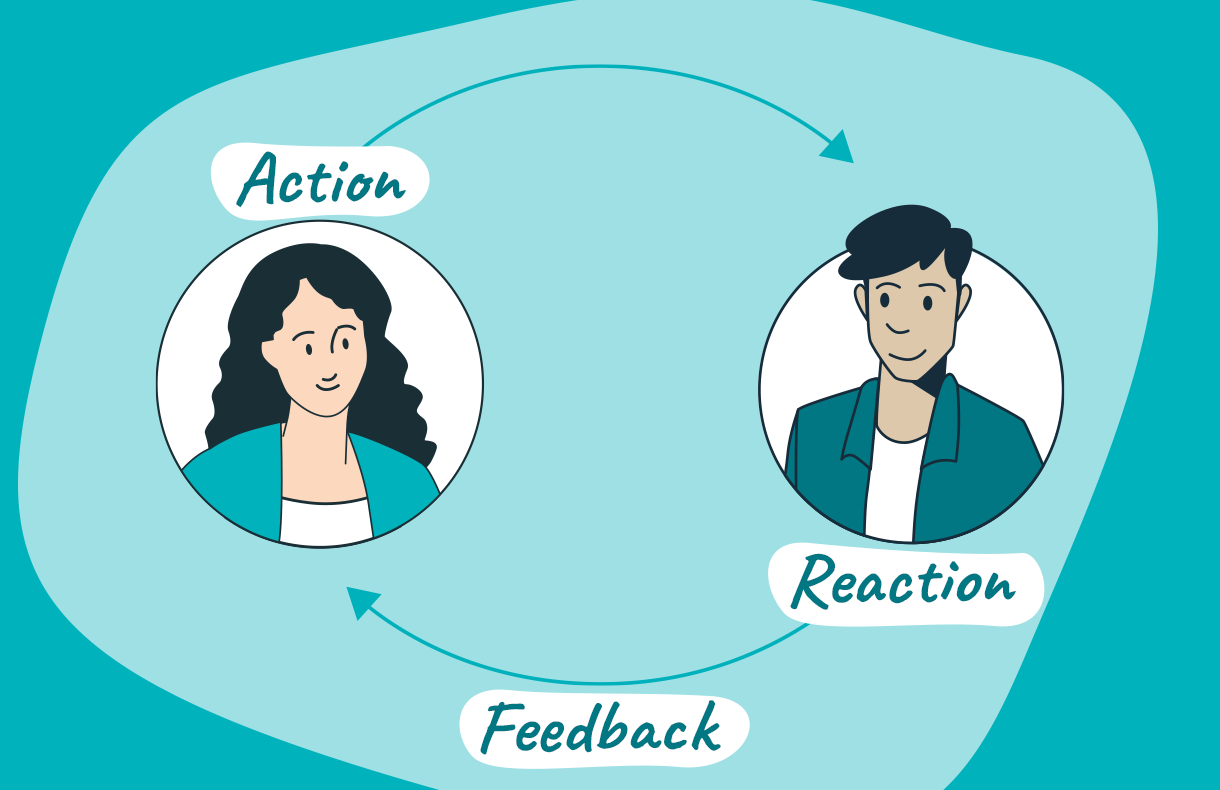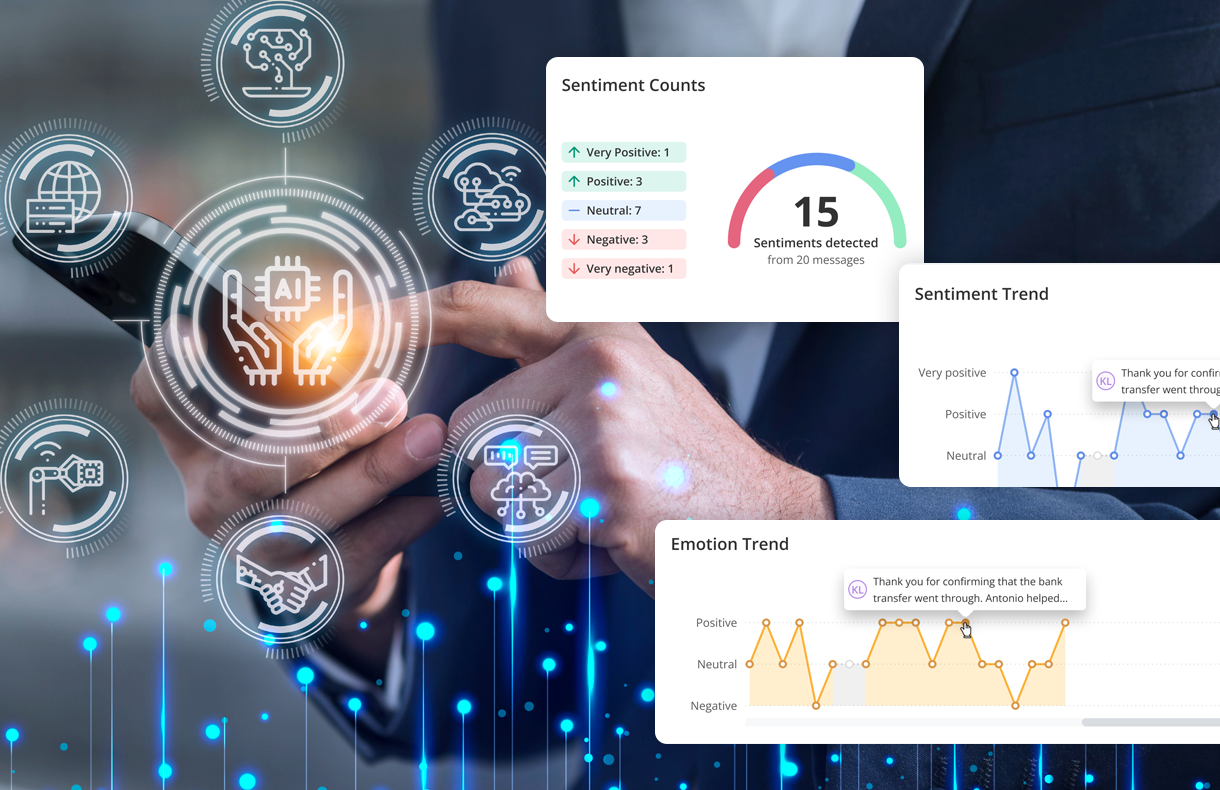Drive Stellar Customer Experiences With Feedback Management And Sentiment Analysis
Customer feedback – a strategic imperative
Every feedback is a reflection of your service, and every critique is an opportunity to improve. In a world brimming with competitors, it would be ideal for a company to take customer feedback seriously. Simply because, customer feedback offers direct insights into your customers' preferences and satisfaction levels, revealing what they appreciate or dislike about your products and services.
Moreover, feedback serves as a potent guide, offering insights to your leadership team to chart a path forward for every aspect of your company, including product development, user experience (UX), and customer support.

Effective customer feedback and sentiment analysis methods
The common question that companies often try to dig into is how to collect customers’ feedback. Well, there are ample avenues to do so. Here are some:
Surveys: Use online or in-person surveys to gather feedback from customers. Surveys can be emailed, embedded on websites, or shared through social media. With survey analytics and reports, you can measure customer loyalty and satisfaction.
Customer service interactions: Gather feedback from customer service interactions, such as phone calls, live chats, and emails, to understand common issues and areas for improvement.
Interviews: Conduct one-on-one interviews with customers to get in-depth feedback about their needs, challenges, and satisfaction with your products or services.
Customer reviews: Monitor and analyze customer inquiries on websites, social media, and other platforms to understand customer sentiment and identify areas for improvement.
Each method has its strengths and weaknesses, so it is often best to combine approaches to get a comprehensive view of your customer's needs and preferences.

Customer satisfaction survey tool
In this regard, ThinkOwl, through its product OwlDesk, offers a customer survey tool that deserves special mention. It helps gather feedback from clients, drive improvements across the customer journey, and measure their level of satisfaction.
The survey tool displays the output of all client feedback, featuring reports on response rate, satisfaction score, promoter score, percentage of customer ratings, etc. Automated survey data and robust analytics are integral parts of this tool, which showcases various reports and profound analytics.
Conducting real-time surveys using OwlDesk's survey tool is super easy. You only have to set the following parameters: the survey question, rating scale, rating order, text labels, mode of sending the survey, and the survey will be ready to launch.
Watch the video for more details! 👇
Please accept marketing-cookies to watch this video.
Taking measures: Implementing changes based on customer feedback and sentiment
Feedback is the compass that guides improvement, but its true value lies in the actions it inspires. In the context of customer feedback, a feedback loop refers to the process of collecting feedback from customers, analyzing it, and then taking action based on that feedback to improve products, services, or processes.
The key components of a feedback loop are:
Collecting feedback: This involves gathering feedback from customers through various channels such as surveys, reviews, and direct communication.
Analyzing feedback: Once feedback is collected, it needs to be analyzed to identify patterns, trends, and areas for improvement.
Taking action: Based on the analysis of feedback, businesses can take action to address customer concerns, improve products or services, and enhance the overall customer experience.
Closing the loop: Closing the loop involves communicating with customers to let them know that their feedback has been heard and to inform them of any changes or improvements that have been made as a result.
By closing the feedback loop, businesses can demonstrate that they value customer input and are committed to using feedback to drive continuous improvement. This, in turn, can lead to increased customer satisfaction and loyalty.
Read this insightful article on VOC, its importance, and how to obtain it.

Insights from the inside
To truly understand customers' pulse, one must step into their shoes, see through their eyes, and feel through their experiences. This is where the journey of customer insights begins – from the inside.
Continuously listening to both positive and negative customer feedback is paramount to maintaining a competitive edge. Leading companies actively listen to their clients' voices, explore social media, and seek feedback through various survey methods.
The data collected from customer feedback empowers businesses to enhance their offerings, identify trends, and elevate the overall customer experience. Customer feedback also demonstrates the value of customer opinions, improves retention rates, and forces companies to take necessary measures to optimize their offerings.

Role of Artificial Intelligence
Technology, especially AI, plays a crucial role in collecting and analyzing customer feedback, revolutionizing how businesses understand and respond to customer needs. Companies can gather vast feedback and derive actionable insights by leveraging tools like customer surveys, sentiment analysis, and AI-driven metrics.
1) Customer survey platforms are equipped with robust reporting features that condense survey data, presenting response counts, percentages, CSAT scores, NPS, etc.
2) Similarly, sentiment analysis tools produce reports summarizing text sentiment, detailing polarity, distribution, and trends, often accompanied by visualizations for clarity.
3) AI-powered analytics offer insights into customer interactions, highlighting engagement rates, response times, satisfaction scores, and sometimes predictive analytics.
These reports assist businesses in comprehending customer sentiments, recognizing trends, and leveraging data-driven decisions to improve products, services, and overall customer experience.
ThinkOwl, through its product OwlForce, offers AI-based features such as intent recognition to accurately analyze customer feedback, including the CSAT Survey, Customer Sentiment Analysis, and other AI-powered analytics dashboards.

Sentiment analysis tool
With the AI technology that ThinkOwl offers with OwlForce, you can decode the secret language of customer satisfaction and gauge customer sentiments.
Customer sentiment analysis combines natural language processing, machine learning, and data analytics. It begins with collecting, cleaning, and processing relevant data. The natural language processing technique classifies text as positive, negative, or neutral. The results are then analyzed and published.
Finally, insightful information such as context, emotions, and sentiments is extracted from the available data. These insights give brands a clear picture of what customers are thinking.
Sentiment Analysis is a powerful tool that unlocks a wealth of insights hidden in your customer feedback. Using natural language processing (NLP) techniques, businesses can gain insights into customer opinions, attitudes, and emotions that help them predict customer behavior and tailor their products or services accordingly.
Watch the video to learn more about it! 👇
Please accept marketing-cookies to watch this video.
Frequently Asked Questions (FAQ)
Q: What role does AI play in analyzing customer feedback?
A: AI plays a significant role in analyzing customer feedback by automating the process of sentiment analysis, categorizing feedback, and identifying patterns and trends in large datasets. AI-powered tools can help businesses process and analyze customer feedback more efficiently.
Q: How often should businesses collect customer feedback?
A: The frequency of collecting customer feedback can vary depending on the business and industry. Some businesses may collect feedback regularly, such as after each interaction, while others may opt for periodic surveys or feedback requests.
Q: What are some emerging trends in customer feedback and survey technology?
A: Some emerging trends in customer feedback and survey technology include the use of AI and machine learning to automate feedback analysis, the integration of feedback data with CRM systems for more personalized interactions, and the use of chatbots and voice assistants to collect feedback in real time.
Q: How can businesses use customer feedback to improve their customer service?
A: Businesses can use customer feedback to improve customer service by identifying pain points in the customer journey, training staff based on customer feedback, and implementing new processes to address customer concerns.



